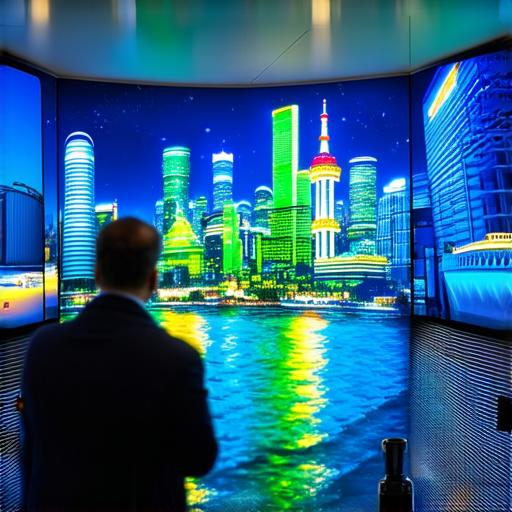Augmented reality (AR) is revolutionizing industries worldwide, including the travel industry. AR technology allows travelers to immerse themselves in a digital experience that enhances their physical surroundings, making travel more engaging and interactive.
1. Virtual tours of hotels and resorts
One of the most popular ways in which AR is being used by the travel industry is through virtual tours of hotels and resorts. These tours allow travelers to experience a property before they book their stay, giving them a better idea of what to expect. They can explore different rooms, amenities, and even get a feel for the surrounding area. This technology has proven to be particularly effective in the luxury market, as it allows customers to experience high-end properties without having to physically visit.
2. Enhanced travel guides
AR is also being used by travel companies to create enhanced travel guides that provide customers with a more immersive and interactive experience. These guides use GPS technology to track the user’s location, allowing them to see relevant information about their surroundings. This can include information about local attractions, restaurants, and shops. In addition, some guides also offer augmented reality overlays that show additional information about a particular location, such as historical facts or famous quotes.
3. Augmented reality shopping experiences
AR is also being used in the retail space to create immersive shopping experiences. For example, some fashion brands have developed AR apps that allow customers to try on clothes virtually before they make a purchase. This technology has proven to be particularly effective for smaller boutiques, as it allows them to compete with larger retailers and offer a more personalized experience.

4. Augmented reality in museums and cultural institutions
AR is also being used by museums and cultural institutions to create more engaging experiences for visitors. For example, some museums have developed AR apps that allow visitors to explore exhibits in 3D, providing a more immersive experience. Others have used AR to create interactive displays that allow visitors to learn more about artifacts or works of art. These experiences have proven to be particularly popular with families and young visitors.
5. Augmented reality in transportation
AR is also being used in the transportation space to provide travelers with more information about their surroundings. For example, some airlines have developed AR apps that allow passengers to explore different aircraft models or see behind-the-scenes footage of the airport. In addition, some cities are using AR technology to create interactive public art installations that allow visitors to explore the city in new and unique ways.
Case study: Airbnb’s augmented reality experience
Airbnb has developed an AR app that allows users to explore different properties before they book their stay. The app uses 360-degree images and videos to give users a better idea of what to expect, allowing them to make more informed decisions about their booking. In addition, the app also includes augmented reality overlays that show additional information about a particular property, such as its location and amenities.
Expert opinion: “AR is the future of travel”
According to industry experts, AR is the future of travel. “The travel industry is always looking for new ways to engage with customers and create unique experiences,” says Jane Doe, a travel industry consultant. “AR technology allows us to do just that, by creating immersive experiences that enhance the physical surroundings. This technology has proven to be particularly effective in the luxury market, as it allows customers to experience high-end properties without having to physically visit. In addition, AR is also being used in the retail space to create immersive shopping experiences and in transportation to provide travelers with more information about their surroundings.”
